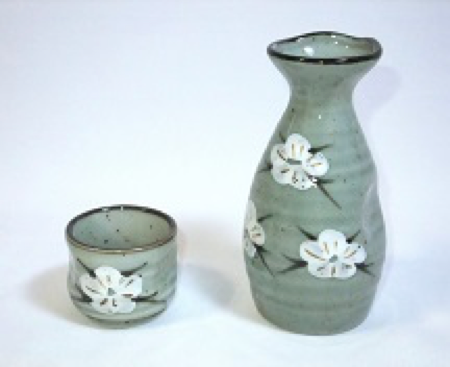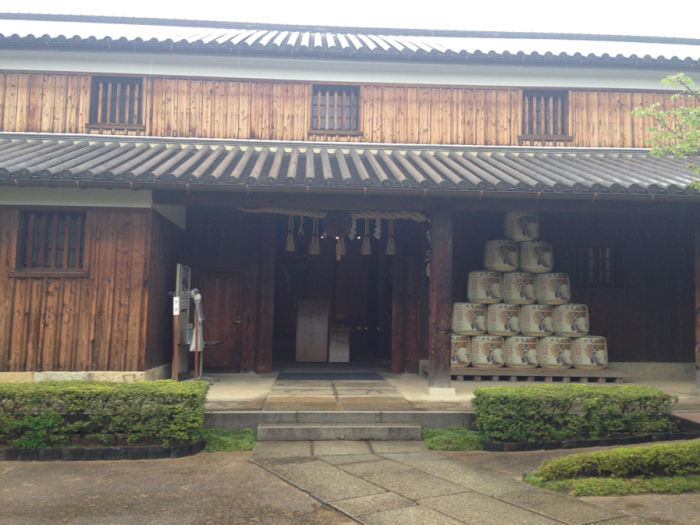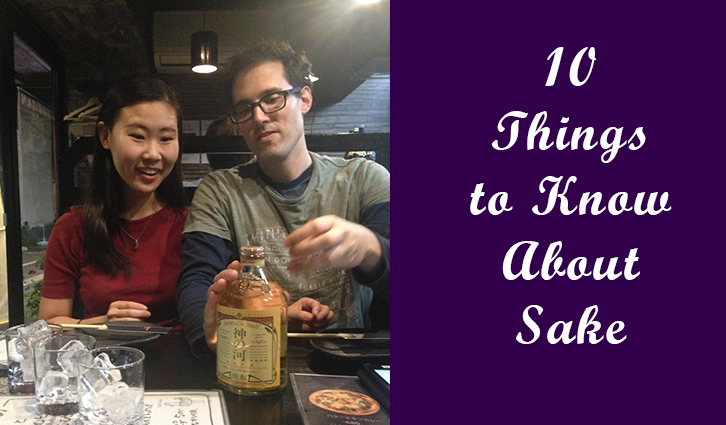Sake: Ten Things to Know
Title picture for sake: My son, Gerard, and his girlfriend, Rimi, opening a bottle of shōchū at Torisan, our favorite izakaya ‘neighborhood restaurant’ in Koshien
When in Japan you’ll want to know that:
1. Sake
Sake is the generic Japanese word for ‘alcohol.’ Everything alcoholic counts as sake.
2. Sake
What you mean by sake is nihonshū, made from a special kind of rice. It has the strength of wine. Accordingly, these days it often comes in a wine glass. Nihonshū is what is served as sake in the United States.

3. Sake
Fukuju is the brand of nihonshū for the Nobel Prize Ceremony in Stockholm. Gerard, Rimi and I had a bottle of it when we had a dinner of Kobe beef in Kobe.
4. Sake
The Fukuju was really good. Gerard and I declared our drink to be smooth while Rimi called it soft, thereby making us all realize a subtle linguistic difference.
5. Sake
Another alcoholic drink you’ll want know about is shōchū. Like nihonshū it is clear. Unlike nihonshū it is made out of either potato or wheat. It has a strength a bit less than vodka.
I happily drink either kind of shōchū. I like it rokku ‘on the rocks.’
6. Sake
The traditional toast when clinking glasses is “Kampai!”
7. Sake
The nihonshū decanter is called tokkuri. Never shake it or peek into it to see how much is left. It hardly needs to be said that you should never drink directly from it, either.

8. Sake
Offering: You offer your companion more drink when their cup is less than 1/3 full.
Pouring: You hold the tokkuri in your right hand and support the bottom with your left. When pouring for someone on your right side, do not turn your right wrist over to pour. Your right hand will be facing down and that is considered poor manners.
9. Sake
Receiving: You hold your cup up in one hand and support the bottom with the other. When the drink is poured, take a small sip before putting the cup back on the table. If your companion’s cup is empty, offer to pour for them.
Note: All giving and receiving in Japan is two-handed, which includes giving and receiving your hotel room key, exchanging business cards and receiving change in any store.

Side note: You don’t hand money or a credit card directly to the cashier. You always use the money tray next to the cash register.
10. Final Note
Always remember to ask for water with your drink. The water drunk alongside is called yawarazi-mizu. Yawaragi is Japanese for ‘calm state of things.’ If you drink water occasionally between sips, your nihonshū or shōchū will taste even more delicious. (Water also helps prevent a hangover.)
If you’re interesting in visiting a sakakura ‘brewery’, the Nada district in Kobe is chock full of them.

Sawanotsuru Sake Museum, Kobe
The barrels are works of art:

If you go to Kobe, treat yourself to a dinner of Kobe beef, a great bottle of nihonshū and a tour of the breweries.
See also: All Japan blogs
Categorised in: Adventure, East Asia, Japan, Thoughts, Travel Tips
This post was written by Julie Tetel Andresen
You may also like these stories:
- google+
- comment



